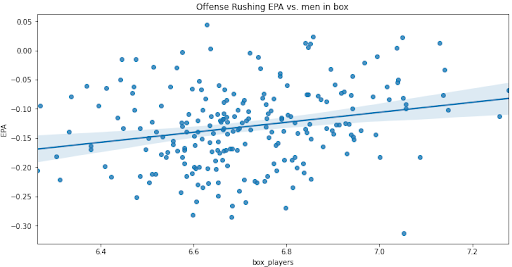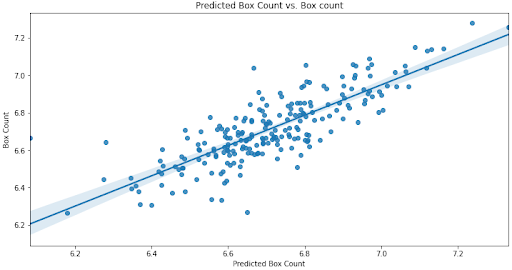During a football game, it's not uncommon to hear analysts and commentators refer to “the box count,” which is often cited to describe the number of defensive players lined up close enough to the line of scrimmage where they can directly impact the opposing running game. The more bodies in “the box,” the more resources the defense has allocated to stopping the run.
However, Zach Binney, an Assistant Professor at Oxford College of Emory University, recently noted that the box count isn't just a function of run defense — it's actually highly correlated with offensive personnel, since a tighter formation with more tight ends or running backs would naturally lead to a higher number of box defenders to account for them.
Moreover, the defense could utilize more or fewer men in the box depending on the strength of the opposing offense and their own ability on defense.
Click here for more PFF tools:
Draft Guide & Big Board | Mock Draft Simulator
Dynasty Rankings & Projections | Free Agent Rankings | 2022 QB Annual
Player Grades
Data from 2015 to 2021 suggests that there is not much correlation between passing expected points added (EPA) and the box count and a weak correlation between box count and rushing EPA.


However, as stated above, box count is highly correlated with the offensive formation, which has to be accounted for. To accurately assess the true effect, three things have to be considered:
- The offensive formation and its effect
- The strength of the team on offense and its effect
- The strength of the team on defense and its effect
To look at the effect of offensive formation, we can create a simple model consisting of situations such as down, distance and the location of players on the formation.
With predicted box count correlated well with the actual count, the model can capture some effect on the box count:

Exclusive content for premium subscribers

WANT TO KEEP READING?
Dominate Fantasy Football & Betting with AI-Powered Data & Tools Trusted By All 32 Teams
Already have a subscription? Log in



 © 2025 PFF - all rights reserved.
© 2025 PFF - all rights reserved.